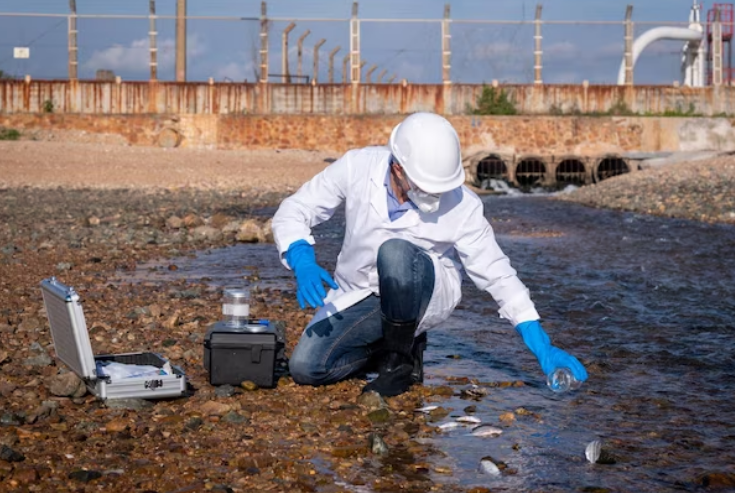Oil spills can have devastating impacts on soil and groundwater, leading to contamination and long-term environmental damage. Cleaning up oil from these resources requires careful consideration and the use of several techniques. In this blog post, we will explore the best techniques available to remove oil from soil and groundwater. From physical methods to bioremediation and chemical treatments, we will provide an in-depth guide to help you understand the options and choose the most suitable approach for your specific situation.
1. Initial Assessment
Before undertaking any oil spill remediation techniques to remove the oil, a thorough assessment of the oil spill should be carried out. Determine the extent of the contamination, the type of oil involved, and the characteristics of the soil and groundwater. This assessment will help you develop an appropriate remediation plan tailored to the specific conditions of the affected site.
2. Containment and Mitigation
To prevent further spreading of the oil, it is essential to establish containment measures. Physical barriers such as booms, berms, or trenches can be used to restrict the movement of the oil into uncontaminated areas. The goal is to stop or slow the spread of oil into nearby surface water or sensitive ecosystems. Absorbent materials may also be used to soak up the oil creating a temporary dam.
3. Excavation and Removal
For heavily contaminated soil, excavation and removal is usually the most effective method. This involves digging out the contaminated soil and transporting it to an appropriate disposal facility. Excavation should be performed carefully, ensuring that the surrounding areas are not further disturbed. It is essential to adhere to the local regulations and guidelines in your area while handling and disposing of the contaminated soil.
4. Enhanced Bioremediation
Bioremediation utilises microorganisms to break down and degrade the oil contaminants. Enhanced bioremediation techniques involve adding nutrients to the oil-contaminated soil or groundwater to stimulate the growth and activity of naturally occurring bacteria and fungi. This process accelerates the degradation of the oil, promoting faster and more efficient cleanup. Without this technique, the natural degradation of oil without the use of microorganisms would take decades.
5. Soil Vapor Extraction
Soil vapour extraction (SVE) is a technique used to remove volatile organic compounds (VOCs), including oil, from soil. It involves inserting extraction wells into the contaminated soil and applying a vacuum to draw out the vapours. SVE is particularly effective for lighter oils that have not deeply penetrated the soil. The extracted vapours are then treated using activated carbon or other appropriate methods.
6. Air Sparging
Air sparging is often combined with soil vapour extraction and involves injecting air into the contaminated soil to promote volatilisation of the oil. The injected air creates an upward flow, stripping the oil contaminants and enhancing their release into the vapour phase. This combination of air sparging and soil vapour extraction can effectively remove oil from deeper soil layers.
7. Chemical Oxidation
Chemical oxidation is a technique that employs oxidising agents to break down and transform the oil contaminants into less harmful substances. Commonly used oxidants include hydrogen peroxide, ozone, or permanganate. Chemical oxidation can be applied directly to the contaminated soil or groundwater or injected into wells to target specific areas of oil contamination.
8. Phytoremediation
Phytoremediation involves using specialised plants to extract, metabolise, and degrade oil contaminants from the soil and groundwater. Certain plant species, known as hyperaccumulators, have the ability to absorb and accumulate large amounts of oil. Phytoremediation can be suitable for low-level contamination or as a long-term remediation strategy in conjunction with other techniques.
9. Monitoring and Evaluation
Regular monitoring and evaluation are essential throughout the cleanup process. Analyse soil and groundwater samples to assess the progress of remediation efforts. Adjust the remediation strategy if needed, based on the results. Monitoring should continue even after cleanup activities have been completed to ensure the effectiveness and long-term success of the chosen techniques.
Conclusion
Removing oil from soil and groundwater requires careful planning and consideration of various techniques. Depending on the extent and nature of the contamination, options such as excavation, enhanced bioremediation, soil vapour extraction, air sparging, chemical oxidation, and phytoremediation can be employed individually or in combination. It is crucial to conduct a thorough site assessment, follow appropriate guidelines and regulations, and continually monitor the progress of cleanup efforts. By employing the best techniques suited to each specific situation, effective and successful oil cleanup can be achieved, restoring the health and integrity of the affected environment.







